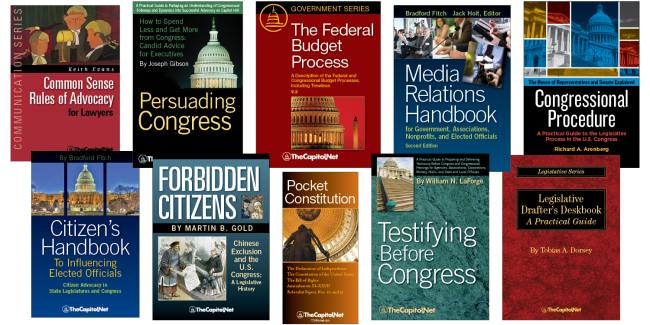From the Congressional Glossary – Including Legislative and Budget Terms
Congressional Review Act: A new idea to eliminate Obama’s agency regulations
The Congressional Review Act (CRA) is an oversight tool that Congress may use to overturn a rule issued by a federal agency, in some cases, rules issued in a previous session of Congress and by a previous President. The CRA requires agencies to report on their rulemaking activities to Congress and provides Congress with a special set of procedures under which to consider legislation to overturn those rules. The CRA, which was enacted in 1996, was largely intended to assert control over agency rulemaking by establishing a special set of expedited or “fast track” legislative procedures for this purpose, primarily in the Senate.
The CRA was included as part of the Small Business Regulatory Enforcement Fairness Act (SBREFA), which was signed into law on March 29, 1996 (Title II, Subtitle E, P.L. 104-121, 5 U.S.C. §§ 601 et seq.).
The CRA requires agencies to report on their rulemaking activities to Congress and provides Congress with a special set of procedures under which to consider legislation to overturn those rules. Under the CRA, before a rule can take effect, an agency must submit a report to each house of Congress and the Comptroller General containing a copy of the rule; a concise general statement relating to the rule, including whether it is a major rule; and the proposed effective date of the rule. Upon receipt of the report in Congress, Members of Congress have specified time periods in which to submit and take action on a joint resolution of disapproval. If both houses pass the resolution, it is sent to the President for signature or veto.
If the President were to veto the resolution, Congress could vote to override the veto.
What is the Congressional Review Act? E&E News Explains
If a joint resolution of disapproval is submitted within the CRA-specified deadline, passed by Congress, and signed by the President, the CRA states that the “rule shall not take effect (or continue).” That is, the rule would be deemed not to have had any effect at any time. Even provisions that had become effective would be retroactively negated.
Furthermore, if a joint resolution of disapproval were enacted, the CRA provides that a rule may not be issued in “substantially the same form” as the disapproved rule unless it is specifically authorized by a subsequent law. The CRA does not define what would constitute a rule that is “substantially the same” as a nullified rule.
Additionally, the CRA prohibits judicial review of any “determination, finding, action, or omission under this chapter.”
The CRA can be used to overturn both major and non-major rules. Major rules are of the greatest economic effect and therefore may be of the most interest to Congress.
The CRA defines a major rule as “any rule that the Administrator of the Office of Information and Regulatory Affairs (OIRA) of the Office of Management and Budget (OMB) finds has resulted in or is likely to result in— (A) an annual effect on the economy of $100,000,000 or more; (B) a major increase in costs or prices for consumers, individual industries, Federal, State, or local government agencies, or geographic regions; or (C) significant adverse effects on competition, employment, investment, productivity, innovation, or on the ability of United States-based enterprises to compete with foreign-based enterprises in domestic and export markets.”
See Congressional Procedure, Ch. 7.M. Congressional Review Act.
What is the Congressional Review Act?
More
- Red Tape Rollback – Pacific Legal Foundation
- Federal Register / Rulemaking / Unified Agenda (CongressionalGlossary.com)
- “The Congressional Review Act: Frequently Asked Questions,” CRS Report R43992 (33-page PDF
 )
) - “The Congressional Review Act (CRA): A Brief Overview,” CRS In Focus IF10023 (5-page PDF
 )
) - “Agency Final Rules Submitted on or After June 13, 2016, May Be Subject to Disapproval by the 115th Congress,” CRS Memo IN10437 (5-page PDF
 )
) - “Disapproval of Regulations by Congress: Procedure Under the Congressional Review Act,” CRS Report RL31160 (25-page PDF
 )
) - “The Congressional Review Act (CRA): A Brief Overview,” CRS In Focus IF10023 (5-page PDF
 )
) - “‘Major’ Obama Administration Rules Potentially Eligible to be Overturned under the Congressional Review Act in the 115th Congress,” CRS Memo November 17, 2016 (11-page PDF
 )
) - “Congressional Review Act Issues for the 117th Congress: The Lookback Mechanism and Effects of Disapproval,” CRS Report R46690, February 19, 2021 (20-page PDF
 )
) - “Congressional Review Act: Disapproval of Rules in a Subsequent Session of Congress,” CRS Report RL34633 (23-page PDF
 )
) - “Congressional Review Act: Rules Not Submitted to GAO and Congress,” CRS Report R409979 (37-page PDF
 )
) - “Counting Regulations: An Overview of Rulemaking, Types of Federal Regulations, and Pages in the Federal Register,” CRS Report R43056 (26-page PDF
 )
) - “The Congressional Review Act and Possible Consolidation into a Single Measure of Resolutions Disapproving Regulations,” CRS Report R40163 (15-page PDF
 )
) - “Congressional Review of Agency Rulemaking: An Update and Assessment of The Congressional Review Act after a Decade,” CRS Report RL30116 (54-page PDF
 )
) - Congressional Review Act – Wikipedia
- The Buckeye Institute Urges U.S. Supreme Court to Enforce Congressional Review Act, April 2021
Courses
- Congressional Operations Briefing – Capitol Hill Workshop
- Drafting Federal Legislation and Amendments
- Writing for Government and Business: Critical Thinking and Writing
- Custom Training
- Drafting Effective Federal Legislation and Amendments in a Nutshell, Audio Course on CD
- Congress, the Legislative Process, and the Fundamentals of Lawmaking Series, a Nine-Course series on CD
Publications
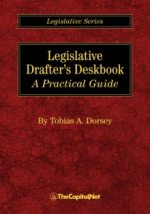
Legislative Drafter’s Deskbook: A Practical Guide
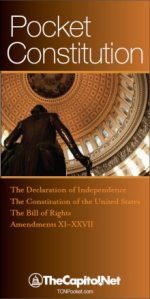
Pocket Constitution
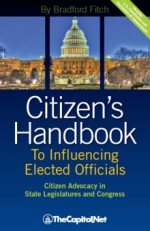
Citizen’s Handbook to Influencing Elected Officials: A Guide for Citizen Lobbyists and Grassroots Advocates
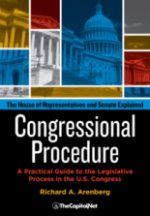
Congressional Procedure
CongressionalGlossary.com, from TheCapitol.Net
For more than 40 years, TheCapitol.Net and its predecessor, Congressional Quarterly Executive Conferences, have been teaching professionals from government, military, business, and NGOs about the dynamics and operations of the legislative and executive branches and how to work with them.
Our custom on-site and online training, publications, and audio courses include congressional operations, legislative and budget process, communication and advocacy, media and public relations, testifying before Congress, research skills, legislative drafting, critical thinking and writing, and more.
TheCapitol.Net is on the GSA Schedule, MAS, for custom on-site and online training. GSA Contract GS02F0192X
TheCapitol.Net is now owned by the Sunwater Institute.
Teaching how Washington and Congress work ™

